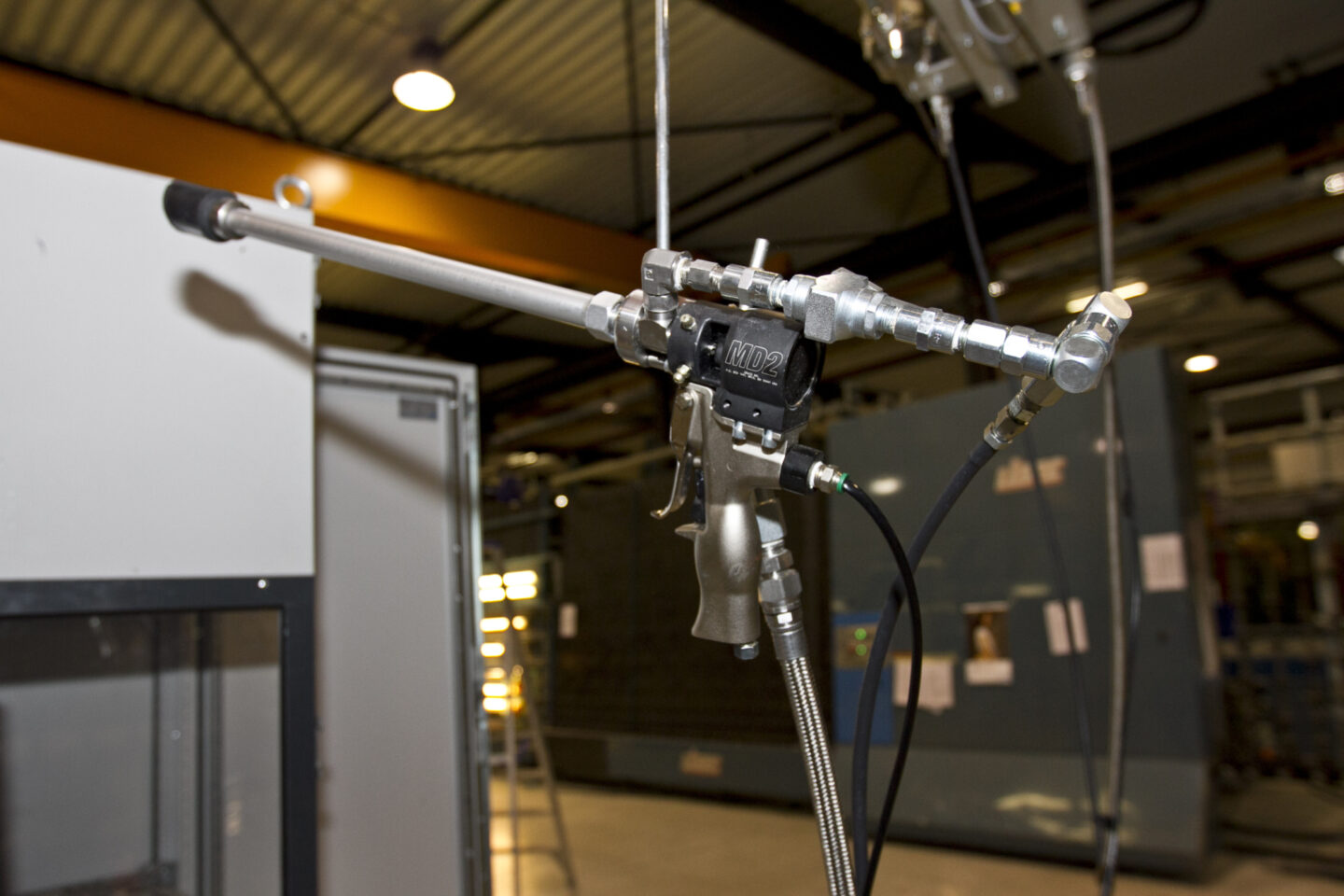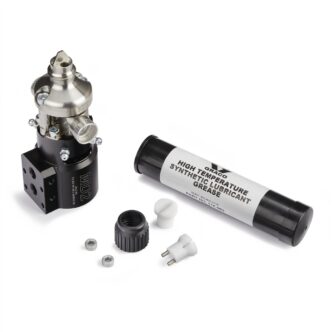A dispense valve may not be a complex piece of equipment as the same model often can be used in many industries, with a variety of materials in many applications with many proportioners. But this does not make its reliability any less important in your adhesive or sealant operation.
Chances are your dispense valves are attached to expensive equipment in a sophisticated setup, meaning that uptime, dispense rate and quality of the fluid mix are essential to an efficient operation. Don’t let a dispense valve or epoxy gun be the source of downtime, quality issues, or angst in your production.
Selecting the right dispense valve is a smart investment. With proven technology that is easy to operate and service, you can be confident your investment will improve your productivity. For example, a Graco MD2 valve:
Minimizes maintenance time and costs while maximizing dispense time
Is designed with fewer parts and is easy to clean
Has a complete modular design that adapts to different installation needs
Does not require unique tools
Handles a wide range of materials
Reduces training time and can help standardize functionality across your plant
The use of adhesives and sealants, and dispense valves are growing with changes in advanced manufacturing and the demands for lightweight products with new materials. The design changes and innovations in dispense valves are significant; you can no longer assume that any two-component adhesive gun will meet your needs.
Need for Efficiency Increases With Growth of Adhesives and Sealants
The MD2 combines two materials to create a rapid curing homogeneously mixed material that is often used to glue components together as part of an assembly. It is sometimes referred to as a 2K gun or mixing head. It is used in automation as a machine-mounted valve and also as a manually triggered, handheld valve. A uniform bead profile and consistent mix will help improve performance and increase throughput.
The primary driver for an increase in the use of dispense valves is the significant overall growth of sealants and adhesives. The category in North America is expected to grow at a compounded annual rate of 4.2 percent from 2021 to 2028. This can be attributed in part to the increase in electronic components in autos, appliances and personal devices. Adhesives are often used to glue components together, and sealants often are used in electronic potting applications and automotive watertight sealing applications.
But there are other considerations in the growth of dispense valves:
More precision work and work with lightweight materials
New materials that are more expensive, so dispensing must be efficient
The supply chain also has had an impact, as a shortage of cartridges has led to manufacturers shifting to pails and drums of material.
The big opportunity for many manufacturers in efficiency gains is moving an operation from manual to automation, which puts a premium on reliability and repeatable precision.
What to Consider in Selecting the Right Dispense Valve
The MD2 consists of an air section and a two-component fluid section, both of which can be repaired or replaced. A static mix tube is attached to the outlet of the two-component fluid section. It is used to homogeneously mix the two materials together as they travel through the mixing stages.
The key considerations in selecting your dispensing valve include:
Picking the right ratio valve, wide or narrow: Whether you select a 1:1 (narrow ratio) or 10:1 (wide ratio), depends on your material’s mix ratio. If the ratio is from 1:1-5:1, you will probably be fine with a 1:1 valve. Anything from 5:1-10:1 or higher may require the 10:1 ratio-capable valve, but lab testing the performance of the valve is highly recommended. Your material supplier or equipment specialist can assist with selecting the right valve for your application.
Picking the right static mixer: The material manufacturer may have a recommendation or your trusted equipment specialists can be of great help with either a lab trial or using their years of experience and expertise.
Accessories: A nightcap will allow for you to end a shift and remove the static mixer to keep material from curing inside of the valve. The ratio check nozzles will allow you to make sure your system is running on ratio and the valve is working properly.
Best practices for cleaning and maintenance of your dispense valves
In some industrial applications, operators run the adhesive and sealant equipment until failure. But lack of maintenance is a missed opportunity to not only extend the life of the equipment but also ensure consistent high-quality output. It is essential to perform proper shut down and daily recommended maintenance after every use. This includes:
Proper shut down and cleaning routine
The static mix tubes are a disposable item and will need to have a routine scheduled replacement interval
Lubricating the gun regularly to help alleviate seal and triggering issues
Regular ratio checks; if the mix ratio is compromised it could impact cure time, adhesion and sealing quality
Clean, dry air is important, so you might need dry filtered air to avoid triggering issues. Air pressure is another factor to consider; dispense valves often require a minimum air pressure of 70-80 psi in order to function properly. This information can be found in the operation and repair manual supplied with the valve. The length and diameter of the trigger air lines is also a factor. Long, small diameter air lines can present delays in trigger timing.
It’s a good idea to have spare valves and parts on hand as they are easy to swap out.
A Trusted Partner Will Help With Your Troubleshooting Issues
When it comes to troubleshooting, our experts at Spray Equipment and Service Center understand all of the considerations from proportioners, supply pumps, hoses, fittings, valves and everything in between. Spray Equipment and Service Center can also help you choose the proper materials of construction. Some materials will require stainless steel wetted components and teflon seals and hose linings. We might know a better way to resolve your issue or improve your setup.
Here are a couple of the most common troubleshooting areas with dispense valves:
Poor mix at the end of the static mixer: A few things could cause this, including a pressure imbalance due to a proportioner issue or a valve not opening properly. You might need a longer mixer, or some sort of temperature conditioning to allow for a more consistent mix. A plugged or worn static mixer will also result in a poor mix.
Poor trigger performance: This could be the result of poor air quality, insufficient air pressure or the air section of the valve may require lubrication or maintenance.
Material leaks: Sometimes partially cured material or other obstructions can prevent the valve from fully closing. Otherwise the valve needle and/or seat could be worn and in need of a rebuild of the fluid section. Inadequate air pressure can also contribute to fluid leaks.
Spray Equipment & Service Center is Your Partner For All Things Spray
You can buy MD2 valves, replacement parts and repair kits on our website. We offer ease of ordering, provide purchase history, including access to part numbers, and access to product brochures and manuals. We also can train your people on how to clean and maintain the MD2. (We’ll even train someone in purchasing so they understand what needs to be done to keep the equipment in top condition.)
For applications with unique requirements and challenges, our expertise and experience can help deliver solutions never before considered. Let our experts help you determine the best solution for your specific application needs.

